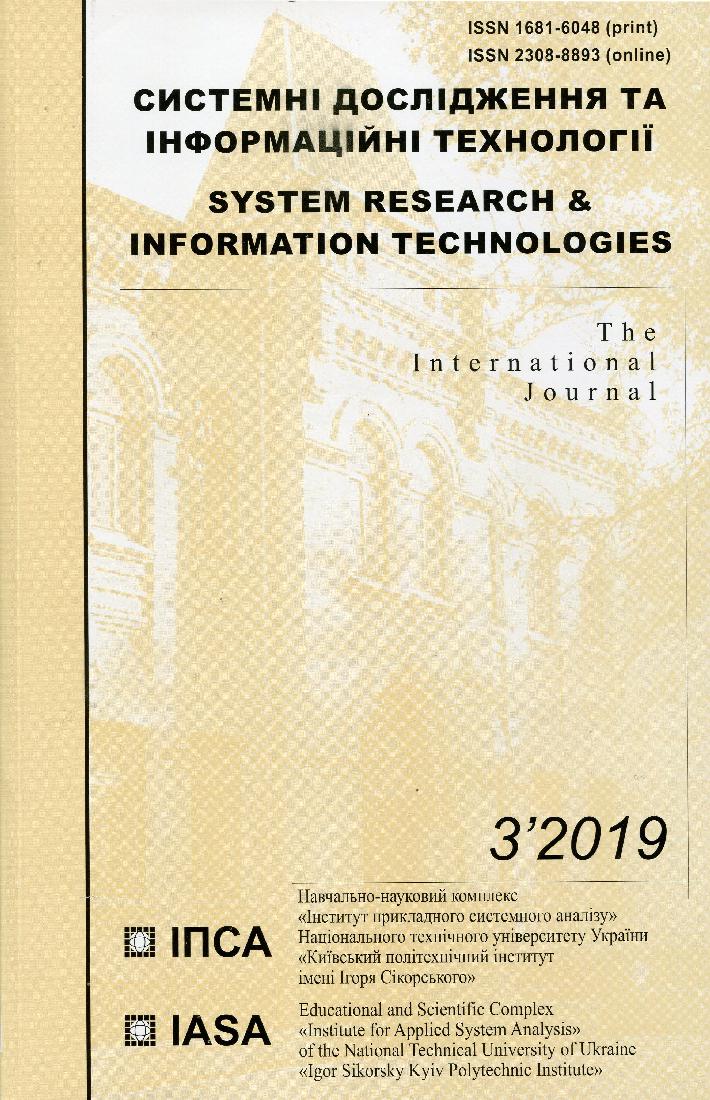Methodology for building the basic metrics of Q-analysis and their application
DOI:
https://doi.org/10.20535/SRIT.2308-8893.2019.3.07Keywords:
system, structure, complexity, Q-analysisAbstract
The study of complex systems requires the use of various methods, which should provide useful information to ensure effective management. Using Q-analysis makes it possible to delve into the structure of the system and understand the complex relationship between its components. In the course of the study, concepts such as a structural tree, local maps, and the inheritance hierarchy were introduced, which make it possible to better understand the meaning of the system metrics obtained by Q-analysis. Then, on this basis, algorithms were developed to determine the basic metrics. They were applied to the banking system of Ukraine as of 2016. An interpretation of the results is proposed and their practical significance is described.References
Atkin R.H. Combinatorial Connectivies in Social Systems. An Application of Simplicial Complex Structures to the Study of Large Organisations, Interdisciplinary Systems Research / R.H. Atkin. — 1997.
Bereza O.A. Sipmplitsial'nij analiz kognitivnyh kart sotsial'no-ekonomicheskih sistem / O.A. Bereza // Informatsionnye tehnologii v upravlenii. — 2011. — № 11. — S. 151–161.
R. Beaumont J. An introduction to Q-analysis / R. Beaumont J., C. Gatrell A. — 1982. — 134 p.
Maletic S.V. Simplicial complexes and complex networks: the influence of higher-order (sub)structures on network properties: doctoral dissertation / S.V. Maletic. — Belgrade, 2013. — 65 p.
Avdeeva Z. Cognitive Approach in Simulation and Control / Z. Avdeeva, S. Kovriga // Plenary papers, Milestone reports & Selected survey papers. 17th IFAC World Congress, Seoul, Korea, July 2008. — P. 160–167.
Atkin R.H. Mathematical structure in human affairs / R.H. Atkin. — London: Heinemann Educational Books, 1973. — 143 p.
Duckstein L. Q-analysis for modeling and decision making / L. Duckstein, S.A. Nobe // European Journal of Operational Research. — 1997. — N 103(3). — P. 411–425.
Medvedenko V.I. Vykorystannja alhorytmiv q-analizu na prykladi bankivs'koyi systemy / V.I. Medvedenko, S.A. Smyrnov. — K.: VPI VPK "Politekhnika", 2018. — № 156. — S. 33–36.
Floyd–Warshall algorithm // Wikipedia. — Available at: https://en.wikipedia.org/wiki/Floyd%E2%80%93Warshall_algorithm – 20.04.2018.
Medvedenko V.I. Vykorystannja q-analizu dlja doslidzhennja zv’jazkiv u bankivs'kykh systemakh / V.I. Medvedenko, S.A. Smyrnov. — Kyyiv: VPI VPK "Politekhnika", 2017. — № 15. — S. 44–46.

